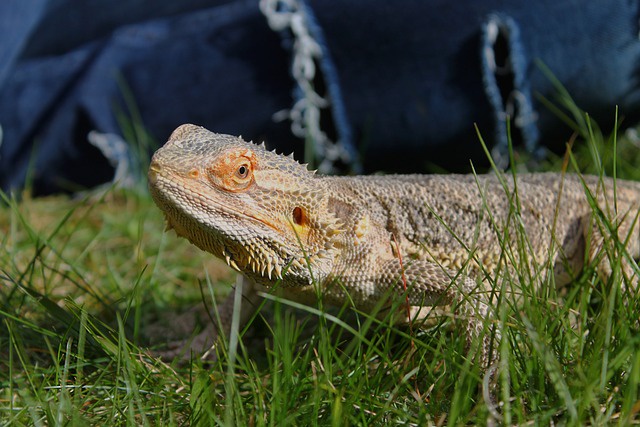Introduction
Bearded dragons (Pogona vitticeps) are popular reptile pets known for their docile nature and captivating personalities. As responsible pet owners, it’s essential to be familiar with various aspects of their care, including their physical characteristics.
One such aspect is the presence of fat pads on the sides of their necks, often referred to as “bearded dragon fat pads.” In this article, we will delve into the significance of these fat pads and how they can serve as valuable indicators of a bearded dragon’s overall health.
- Anatomy of Bearded Dragon Fat Pads
Bearded dragon fat pads are located on both sides of their necks, just behind their jaws. These pads are a natural part of their anatomy and are primarily composed of adipose tissue.
While they are not unique to bearded dragons and can be found in various other reptile species, the size and condition of these fat pads can vary between individuals and are subject to change depending on several factors.
- The Role of Fat Pads in Bearded Dragons
The fat pads in bearded dragons serve multiple purposes, some of which are:
- a) Energy Storage: Fat is an essential energy reserve in animals, and bearded dragons use these fat pads to store excess energy derived from their diet. In the wild, during periods of limited food availability, this stored energy can help sustain them through lean times.
- b) Hormone Production: Adipose tissue, besides being an energy store, is also involved in the production and regulation of various hormones. This can influence their metabolism, reproduction, and overall health.
- Healthy Fat Pads vs. Unhealthy Fat Pads
- a) Healthy Fat Pads: In a healthy bearded dragon, the fat pads should have a moderate and smooth appearance. They should not be excessively bulging, as this could be an indication of obesity, a common issue in captive reptiles that can have severe consequences on their well-being.
- b) Overweight and Obesity: When fat pads become enlarged and start to sag, it is a sign that the bearded dragon is overweight or obese. Obesity in bearded dragons is often a result of improper diet, lack of exercise, or a combination of both. This condition can lead to serious health problems, such as fatty liver disease and reduced lifespan.
- c) Underweight and Malnourishment: Conversely, if the fat pads appear sunken or very small, it might indicate that the bearded dragon is underweight or malnourished. Underweight dragons can be weak, lethargic, and susceptible to illnesses.
- Maintaining Healthy Fat Pads and Overall Health
- a) Balanced Diet: Providing a well-balanced diet is crucial to maintaining healthy fat pads and overall health in bearded dragons. Their diet should consist of appropriate insects, such as crickets, mealworms, and dubia roaches, along with a variety of vegetables and occasional fruits.
- b) Proper Husbandry: Creating an appropriate living environment is essential for your bearded dragon’s health. Ensure they have access to a suitable habitat with proper temperature gradients, UVB lighting, and hiding spots.
- c) Regular Exercise: Encourage physical activity by providing opportunities for climbing, basking, and exploring their enclosure. Regular exercise helps prevent obesity and keeps bearded dragons active and engaged.
- Monitoring and Seeking Veterinary Care
Regularly monitor your bearded dragon’s fat pads, along with their behavior, appetite, and bathroom habits. Any significant changes in fat pad size, weight, or behavior should prompt a visit to an experienced reptile veterinarian. Early detection of health issues can lead to more successful treatment outcomes.
Conclusion
Bearded dragon fat pads are not merely cosmetic features; they play a vital role in the overall health and well-being of these captivating reptiles. By understanding the significance of fat pads and taking appropriate measures to maintain them at a healthy size, you can ensure that your bearded dragon lives a long, happy, and healthy life as a cherished member of your family. Remember, responsible pet ownership includes continuous learning and attentive care for these amazing creatures.


No comments yet